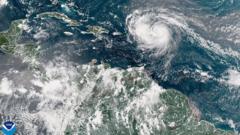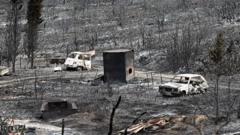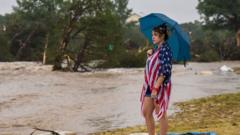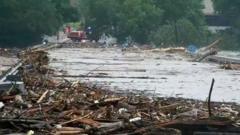Hurricane Erin has intensified rapidly to a category five hurricane, with sustained winds of 160 mph. It is set to impact the Caribbean and the U.S. east coast, with life-threatening surf conditions and potential for flash floods in its path.
Hurricane Erin Escalates to Category Five, Threatening Flash Floods and Dangerous Surf
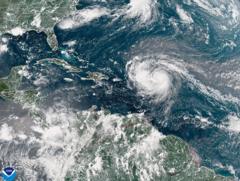
Hurricane Erin Escalates to Category Five, Threatening Flash Floods and Dangerous Surf
The National Hurricane Center reports rapid intensification of Hurricane Erin to a category five storm with winds reaching 160 mph, impacting the Caribbean and U.S. East Coast.
Hurricane Erin has undergone rapid intensification, escalating to a category five hurricane with maximum sustained winds hitting 160 mph (260 km/h). Mike Brennan, Director of the National Hurricane Center, revealed during a briefing that the "extremely powerful" storm transitioned from tropical storm status to its current strength in less than 24 hours, after gaining significant intensity overnight.
Forecasts indicate that Erin will travel north of the Leeward Islands, Virgin Islands, and Puerto Rico over the weekend, delivering up to 6 inches (15 cm) of rain, which raises the chances of flash flooding and mudslides in affected areas. As the first hurricane of the 2025 Atlantic season, Erin is currently not expected to make landfall on the US mainland.
In a remarkable show of rapid intensification, Erin's winds surged from 100 mph early Saturday morning to their present strength of 160 mph, according to Brennan. In the upcoming week, the storm is projected to gradually move northward along the eastern Bahamas and toward the Outer Banks of North Carolina, generating dangerously strong surf and rip currents along nearly the entire east coast of the United States.
States like Florida and areas of the mid-Atlantic are forecasted to experience the most perilous surf conditions, with Bermuda also at risk of heavy rainfall and hazardous surf. In light of potentially gale-force winds, the U.S. Coast Guard has enforced restrictions for vessels in ports on St. Thomas and St. John in the U.S. Virgin Islands, along with six municipalities in Puerto Rico, including San Juan.
Meanwhile, the National Oceanic and Atmospheric Administration (NOAA) has signaled that this year's Atlantic hurricane season is predicted to be "above normal," with an increasing likelihood of tropical storms reaching categories four and five as a consequence of global warming.

